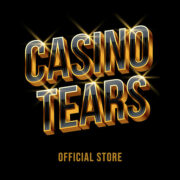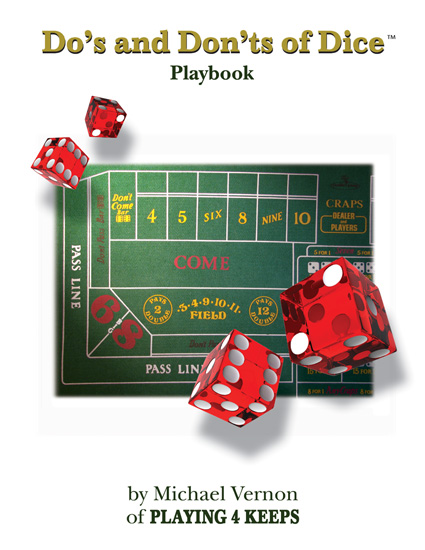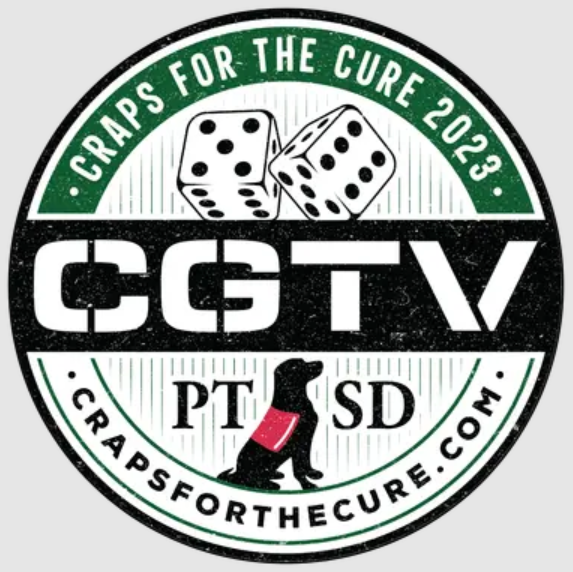|
Introductory Craps - Part 1
BY: Mike in Hawaii I
There are three games in the Casino which offer low house advantage (Vig) and are considered by virtually all experts to be the best games to play for your money. Blackjack requires learning basic strategy and following it carefully in order to qualify as one of the three. Baccarat is easy and quick to learn, but many find it a lot like playing a slot machine, though with better house advantage.
Craps is unique in that it offers on the same felt layout the best and worst bets in a typical Casino. If you stick with the few "best bets", Craps qualifies as one of the very best games to play. However it charges a large "ignorance tax" and the layout is loaded with a staggering array of bets. Fortunately, most of them can be permanently ignored, some of them only make sense to advanced players, and the few that are left, which are good bets, are easy to learn.
Unfortunately Craps is intimidating for the new player. It is noisy and seems chaotic. There is not just one dealer, a craps table has an entire staff to run it. The felt layout looks like a confused minefield of nonsense and numbers. Craps tables accommodate more than a dozen players. It is one of the few Casino games played by a group. Between each roll there seems to be random pandemonium with chips being tossed this way and that amidst coded phrases and signals occasionally punctuated by dice flying through the air, which always seems to generate even more confusion and noise as soon as they land.
The good news is you can easily learn how to fit into this action, make sensible bets and figure out what is going on. First you need to learn the major actors in this play.
Employees at a Craps Table
Typically four Casino employees run a Craps game at a full size Craps table. In the middle sitting down behind a HUGE stack of chips (properly called cheques) is the Boxman. He is kind of the leader of the group. He is the only staff member who sits. The Boxman is the banker. He has to be serious, that is a lot of the Casino's money in front of him. Eagle eyed, constantly watching, making change for dealers, storing excess chips for dealers, and lording over all those chips. He has a battery of mirrors built into the craps table to help him see things from all angles exploiting his low seated viewing angle to see what others cannot. He also considers the dice to be his personal property, and he is extremely protective of them.
Standing opposite him is the Stickman. He is the guy who has the big, long rattan stick with the curve on the end. He moves the dice around, recovering them after every roll, presenting them to the shooter when it is time for him or her to roll the dice again. He is also in charge of the block of bets immediately in front of him, the really bad bets on the table, the proposition bets. And he is noisy! Like a carnival barker, he has special craps patter, and seems to be constantly using it. Cheerleader, ramrod, the verbal engine that moves the craps game along. While the Boxman is grim and silent, the Stickman is always chattering and outgoing.
Finally, there are the important guys for the average player. The two Dealers. There is one dealer on the left side of the table and one dealer on the right side of the table. Both have betting layouts on the felt in front of them which are mirror images of each other. Offering the same array of bets on both ends of the table. Most of the time players interact with their dealers.
When it is your turn to shoot, the Stickman becomes important because he provides you with the dice for you to shoot. The Dealer on your end of the table is always important because only he can place some of the bets for you, he pays off all your winning bets, takes away all your losing bets, exchanges your money for chips when asked, and is the guy you ask for "color" when you cash out of a craps game.
The Two Phases of Craps
Come-out Roll & Chasing a Point
Craps is played with a pair of dice. There are 36 possible ways the dice can end up after they are thrown, but what is really important is the total of the tops of the two dice added together. The dice will always total from 2 to 12 inclusive. These 11 numbers, sums of the top faces of the two dice after they have been rolled, is the basis of virtually all betting in Craps.
Craps is played in two phases. Either you are waiting for a Come-out Roll, or the shooter is Chasing a Point.
On each end of the table there is a large round flat object called a "Puck" that is manipulated by the two dealers. The Puck says "OFF" on one side and "ON" on the other side. If that big round thing says "OFF", the next roll of the dice will be a Come-out Roll. The Come-out roll is the first roll of a new "Hand". A new shooter is guaranteed at least one hand. If he is lucky, he may get to "hold the dice" for quite a while, shooting again and again, cycling through quite a few Come-out Rolls. Even if the shooter "Craps" on a Come-out Roll, and loses that particular hand, he still holds the dice and gets to shoot again.
These rules apply ONLY to a Come-out roll:
1. The shooter will lose immediately if he rolls "Craps". This happens if the sum of the two dice is 2 (Snakeyes), 3 (Crabs) or 12 (Boxcars).
2. The shooter will win immediately if he rolls a "Natural". This happens if the sum of the two dice is 7 or 11 (Yo).
3. Otherwise the shooter "Sets a Point". The point he sets is whatever is showing on the dice.
If the shooter sets a point, that hand of craps enters the second phase, chasing a point. Now the rules change. The dealer will turn the puck over so it reads "ON" and place it behind one of the "point number" boxes on the layout. Point numbers are 4, 5, 6, 8, 9 and 10. All the numbers that do not win or lose immediately on the Come-out roll.
If a shooter rolls a 5 on the Come-out roll, then his point is 5. The puck is flipped over to read "ON" and the dealer moves the puck behind the FIVE box on the layout so everyone can remember that the established or working point is 5. Now the 7 becomes the boogie man. While the 7 is a Natural and an automatic win on the Come-out Roll, it becomes sudden death when chasing a point! Also known as a "Seven Out".
When Chasing a Point these are the rules:
1. If the shooter rolls a 7, he Seven's Out and loses. Also he has to pass the dice to the next shooter.
2. If the shooter rolls his point a second time, he "Makes his Point" and wins. He also gets to shoot again.
3. If he rolls anything else, nothing happens. He just keeps rolling.
The one thing that can cause a shooter to have to pass the dice is to Seven Out when he is trying to make a point. Then dice pass to the next shooter counterclockwise around the table. That is why it is called "Sevening Out". Since the shooter does not have to pass the dice when he Craps on the come-out roll, it is not correct to refer to that as "Crapping Out".
Special Notes for the Shooter
There is one special betting rule for the shooter. The shooter must make a pass line bet. This is the only mandatory bet at the craps table! To throw the dice, you must make at least a minimum pass line bet. You are betting "right" on yourself. For everyone else at the table, all bets are optional. Of course the Casino greatly prefers everyone to be making some kind of bet all the time when taking up room at a busy craps table.
A shooter gets to throw the dice, again and again, until he Sevens Out. Then he has to pass the dice to his left. If it is your turn to shoot, you can simply look at the Stickman when he presents you with dice and say "Pass" if you are not ready or willing to shoot. The Stickman will simply move the dice to the next person on your left around the table. If you decide to take your turn and shoot the dice, the Stickman will shove five dice in front of you with his stick. You get to pick any two dice to shoot with. Move your lucky pair of dice to one side. He will then scoop up the remaining three.
There is one major rule for handling dice at a Craps table. Use one hand only! You should only touch, pickup, manipulate or throw the dice with one hand. Never use two hands. Never move the dice from hand to hand. After your first roll, if you get to roll again, the Stickman will recover and return the same two dice to you when it is time for you to shoot again. Do not worry if he does not give the dice to you immediately. There is usually a bit of a delay while the all bets are being adjusted.
The Boxman is very protective of HIS dice. Never take the dice out of the line of sight of the Boxman. If you throw the dice and one accidentally goes off the table, it is not a big deal. The errant die will have to be recovered and then very carefully examined by the Boxman, but this is routine.
Throwing the dice is not difficult. Pick a landing spot at the opposite end of the table about 1 foot short of the end wall of the table. Toss the dice with a smooth motion for that landing spot, trying to hit the felt surface and then gently bounce the dice off the little vertical wall at the far end of the table.
The Casino wants you to toss the dice in a nice arc through the air and they want you to bounce the dice off the far end of the table. They do not like weak short throws, but you do not need to try to hit the security guard over at the Blackjack table either! However, they certainly do not want you sliding the dice across the felt surface.
Pick the dice up with one hand and, with a sweeping motion of your arm, toss them to the opposite end of the table. Letting them fly through the air with an easy arc. If a throw comes up a bit short and does not hit the far end of the table, it is frequently no big deal. Often the Stickman will be happy enough with the throw. He may ask you to throw a bit harder next time.
If you really botch the throw, he will probably yell "No Roll!" and ask you to toss the dice again. Of course everyone appreciates good throws that do not delay the game, but everyone has to get used to throwing the dice at a real table somehow. After the first few throws, it should become a lot easier to "meet specifications", keeping the dice on the table, getting a reasonable arc and bouncing off the far end. Besides, you spend a lot more time watching and betting on other shooters than shooting the dice yourself.
Listen to the Stickman!
Remember I said the Stickman was noisy? He is like a play-by-play sports announcer and tells you a lot about what is going on. He announces the result of each throw, usually with clever annotations and banter such as:
SEVEN! Pay the line, take the don't. (if a Come-out Roll)
SEVEN! Out, Pay the Don't, take the line (if Chasing a Point)
New Shooter Coming Out (if the previous shooter has Sevened Out and the dice have been passed)
Shooter Coming Out (if the same shooter is about to start another hand with a new Come-out roll)
Four, the point is Four, Four is the Point (if the shooter on a Come-out roll just set a point of four)
Three! Craps, Take the line, Pay the Don't (if a Come-out Roll)
Eight the hardway, hard Eight (if the shooter rolls an eight as two fours, 4 + 4, on the two dice)
So you see, if you listen to the Stickman, he will help you keep track of what is going on, though it may take a little time to get used to all his jargon and fancy banter.
He also has a lot to say about "recommended" proposition bets. He is like a used car salesman pushing his prop bets. They are all high house advantage bets and many are the worst bets in the Casino! That part of his line of talk should be regarded as "commercials" for the lousy bets on the table. These horrible bets include "Big Red" and "The Horn".
Review so Far
1. It is the sum of the top faces of the two dice that counts in Craps, the numbers from 2 to 12 inclusive.
2. Always handle dice with just one hand. The Boxman will be watching closely. Don't let him bother you, he is always that way.
3. When you throw the dice, try to gently hit the little vertical wall at the far end of the table.
4. The Stickman manipulates the dice and announces the results of each roll.
5. The Dealer at your end of the table pays all winning bets, collects all losing bets and has to place some of your bets for you. He also takes your cash and converts it to chips, and the reverse, "Colors up" your winnings when you are ready to leave.
6. A shooter is either "Coming Out" (nothing to do with closets), or trying to "Make a Point".
03/10/07
Click Here to return to the list of prior articles ...
|
 |










